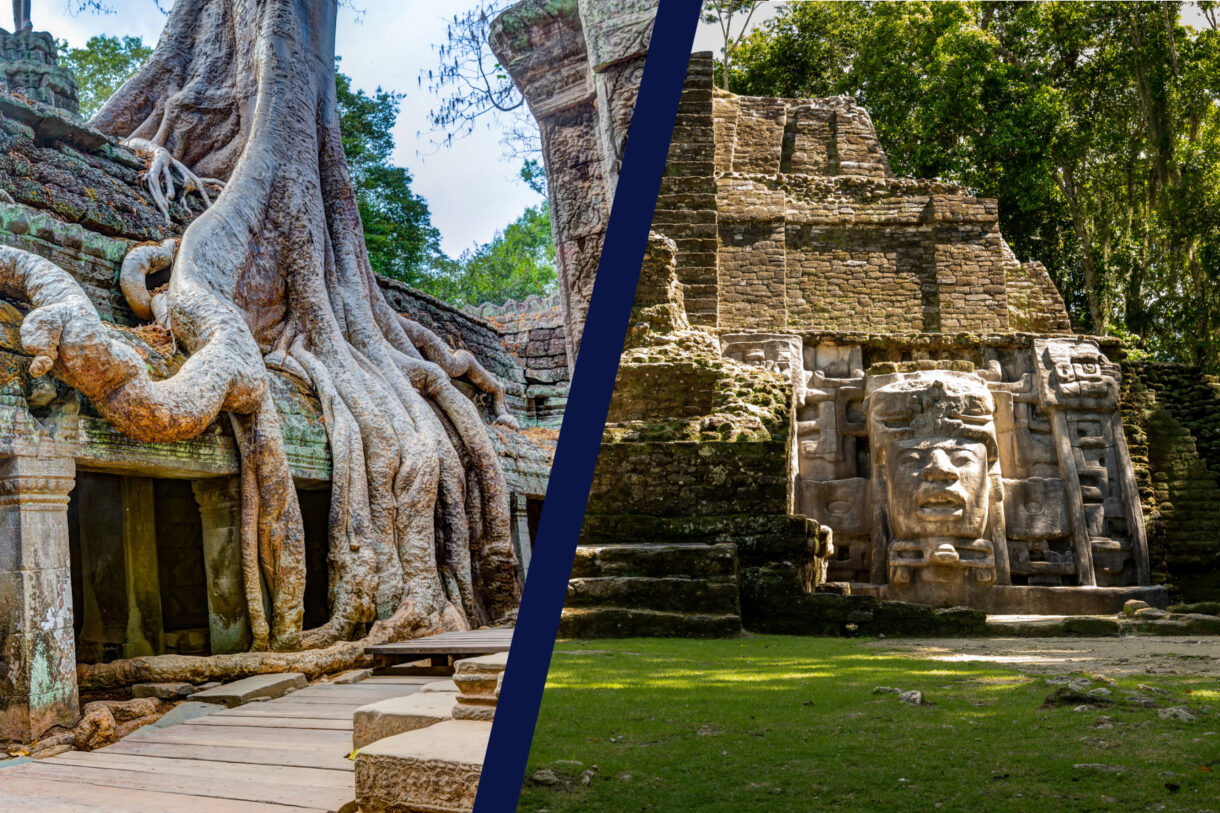
Central America VS Southeast Asia: Where should YOU go backpacking?
So you’re ready to take the plunge – you want to start backpacking! Yay! It’s time to start planning. Maybe you have a finite time to travel? Or maybe you want to travel long-term and see how long you can stretch your budget. We all know that Europe or the USA will eat up too much cash. So where’s it going to be?
The budget-friendly regions of Central America and Southeast Asia are two of the most popular destinations for backpackers. Both regions are (mostly) warm, sunny, there’s tons to do, and best of all, they’re cheap! It’s easy to have a lot of fun, with not a lot of cash to splash
But despite their similarities, Southeast Asia and Central America are incredibly different. Not just in the obvious ways – landscape, language, food, and culture – but also in how different our backpacking experiences felt.
That’s why we’ve written this guide to help you decide which destination is best for you: Central America VS Southeast Asia. We’ve compared everything – the weather, cost, food, activities, and vibes.
Ready? Let’s go!
Contents
- Central America VS Southeast Asia: an overview
- Central America VS Southeast Asia: Weather
- Central America VS Southeast Asia: Best times to visit
- Central America VS Southeast Asia: Cost & Budget
- Central America VS Southeast Asia: Things to do
- Central America VS Southeast Asia: Food
- Central America VS Southeast Asia: The backpacking crowd
- Central America VS Southeast Asia: Music
- Central America VS Southeast Asia: Nightlife
- Central America VS Southeast Asia: Scenery and vibes
- Central America VS Southeast Asia: Language
- Central America VS Southeast Asia: Ease of Travel
- Central America VS Southeast Asia: Safety
- The verdict: which is best?

Cambodia’s Siem Reap
CENTRAL AMERICA: AN OVERVIEW
Central America is the skinny region located between North America and South America (well, technically it’s on the North American continent), consisting of seven countries. Click on any of these to go to that country page: inspire your trip and learn from our mistakes!
Sandwiched between the Pacific and Caribbean Oceans, these Latin American countries are known for their nature and landscapes. Between Panama and Belize, there are volcanoes to hike, gorgeous beaches, tropical rainforests, and more biodiversity than you can shake a stick at!
Most of the Central American countries are united by a rich cultural heritage, with indigenous Mayan culture mixing with colonial Spanish culture, and (except Belize) a common language: Spanish!
Some travellers (like us!) also include Mexico in their Central America itineraries, although many Mexicans would agree that they belong firmly in the ‘North American’ Region. Either way, Mexico is a great addition to the seven countries above!
SOUTHEAST ASIA: AN OVERVIEW
Southeast Asia is a subregion of Asia. It’s made up of several countries located to the southeast of the Asian continent. The Big Four countries which jump to mind, when you say ‘Southeast Asia’ are:
- Thailand
- Vietnam
- Cambodia
- Laos
These four may be the main backpacker hubs. But Southeast Asia also includes some other amazing and lesser-visited countries including:
- Brunei
- East Timor (Timor-Leste)
- Indonesia
- Malaysia
- Singapore
- Myanmar (Burma)
- Philippines
Like Central America, Southeast Asian countries are known for their tropical climates, stunning beaches, and ancient temples (although the vibes are completely different). Most of the countries in SE Asia have their own unique language, history, culture, and experiences to discover.
I’ve travelled extensively in this region, but it was long before this blog began and a lot of our advice would be outdated, so our posts on SE Asia are limited (sorry!). There are so many other amazing and up-to-date blogs about this region though. Have a Google and see what you can find.
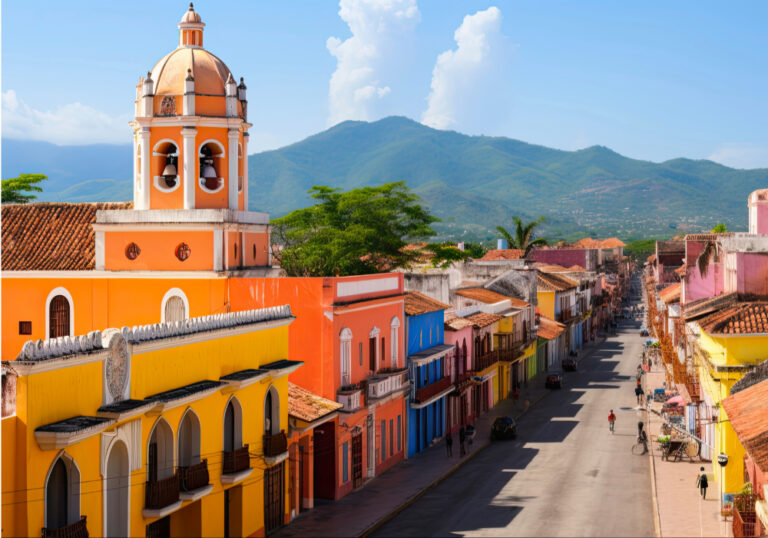
Honduras’ colonial-style towns are well worth a visit
CENTRAL AMERICA VS SOUTHEAST ASIA: WEATHER AND WHEN TO GO?
So, Central America VS Southeast Asia… which has the best weather?
Well, both regions are around similar latitudes and both have a similar tropical climate, including a wet season and a dry season.
We’re firm believers that there is no ‘best time’ to visit a country or region. Each season brings its own unique charm and challenges. Drier seasons may have calmer skies and sunnier weather, perfect for outdoor adventures. But these months are busier, and you may not have the chance to be so spontaneous in your travel plans as the best activities and accommodation can book out quickly.
Rainy seasons with their lush greenery and lower tourist numbers might be more interesting for photographers, or bring higher chances of spotting rare wildlife. However, infrastructure across both Central America and SE Asia varies, with floods common. If you’re visiting during the wet season, you should always plan enough time for your journey, bring a raincoat, and always expect to get wet feet!
BUT WHICH IS BEST?
I like to travel off-season. I don’t mind the weather not being perfect (heck, we live in Scotland so we’re used to four seasons in a day!). I do enjoy that lower visitor numbers let me have a more intimate and immersive cultural experience whilst combatting overtourism. So, do your research and figure out which season is best for you, not which season is the best ‘overall’.
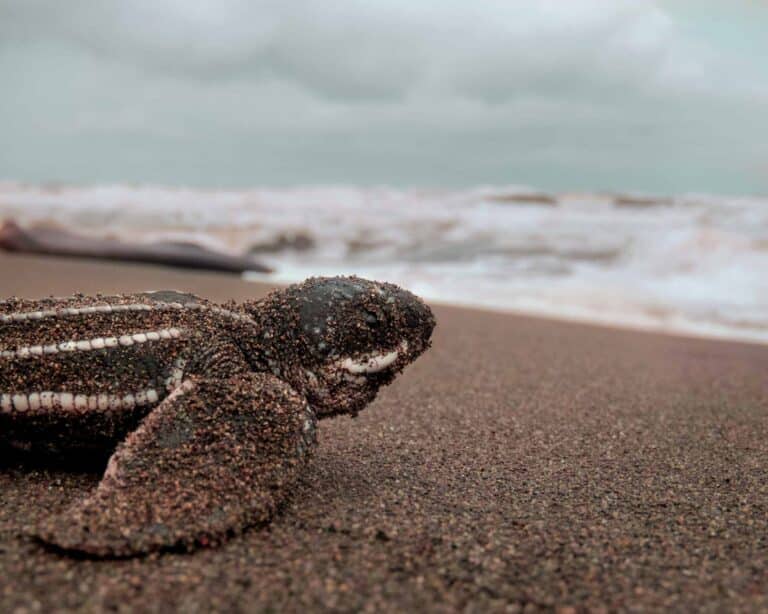

Costa Rica is a haven for eco-friendly wildlife tourism
CENTRAL AMERICA: WHEN TO VISIT
Central America has a similar climate throughout all the countries. The ‘dry season’ is usually between November to April. Expect sunny days, lower humidity levels, and minimal rainfall. This is often considered the ‘best’ time to visit Central America, as less rain means you can spend more time enjoying all the outdoor adventures that Central America has to offer.
The wet season is from May to October, with daily rains that ramp up in intensity as the season goes on. Central America also has a hurricane season, which runs roughly from August to November.
We visited Central America in the ‘shoulder season’, from April to July. It stayed dry and fine into June before we experienced heavy rains, although the Caribbean side is rainy year-round!
SOUTHEAST ASIA: WHEN TO VISIT
The climate varies significantly across the region of Southeast Asia. But similarly to Central America, the climate is warm and tropical.
The best time for your trip usually depends on which countries you’d like to visit and what you want to do. Generally speaking, the best time to visit most places in Southeast Asia is from November to February when the weather is dry (driest) and warm (on average). The ‘Big Four’ – Thailand, Laos, Cambodia, and Vietnam – enjoy their finest weather between January and March.
Wet-season monsoon rains fall from June to October in most SE Asian countries. Southeast Asia can get very hot and very humid in the monsoon season. Heat plus humidity is a real killer for me but I don’t mind a bit of rain!
Note: Thailand’s Andaman and Gulf Coasts have opposite monsoon seasons to the rest of Southeast Asia!
A NOTE ON CLIMATE CHANGE...
It’s important to note that climate change is causing unpredictable weather patterns, and sometimes the wet and dry seasons arrive earlier or later. No matter which region you visit, look up the weather before you go so that you know what to expect!

Cambodia’s Battambang Bamboo Train
CENTRAL AMERICA VS SOUTHEAST ASIA: COST
Cost is a huge factor when planning any backpacking trip, especially if you’re hoping to travel for a while. Both Central America and Southeast Asia are known as budget-friendly regions to travel. But when it comes to Central America VS Southeast Asia, which one is better bang for your buck?
We can split this down into two sections, the cost of getting to each region, and the cost of travelling around each region.
COST: GETTING TO EACH REGION
The cost of getting to each region definitely factors into the overall expense when trying to choose between Central America VS Southeast Asia. And the price of flights is going to vary wildly depending on where you’re based!
North American-based travellers might find it cheaper to fly to Central America. Touristy areas, such as the Yucatan Peninsula of Mexico, and Panama or Costa Rica have reasonably priced links to the USA and Canada, with direct flights available from most major airports.
Travellers from Australia and New Zealand can easily find budget flights to Southeast Asia due to the close proximity of this region. Getting to Central America from Australia will be more expensive, and include longer or multiple flights.
Whereas, Europe-based travellers will find flights to both regions equally expensive. Direct flights are not common, especially if you’re on a budget, and you might have to change once or twice before you get to your destination.
COST: TRAVELLING AROUND EACH REGION
Flights may be expensive, but thankfully, once you get to each region, you’ll find it a lot cheaper to travel around!
But scroll further down this list, and you’ll find Central American Nicaragua, El Salvador, and Guatemala. And the only reason Honduras doesn’t make the cut is probably because the authors were too scared to go there! After all, their capital city, San Pedro Sula, is known as the most dangerous city in the world (but is it really?)

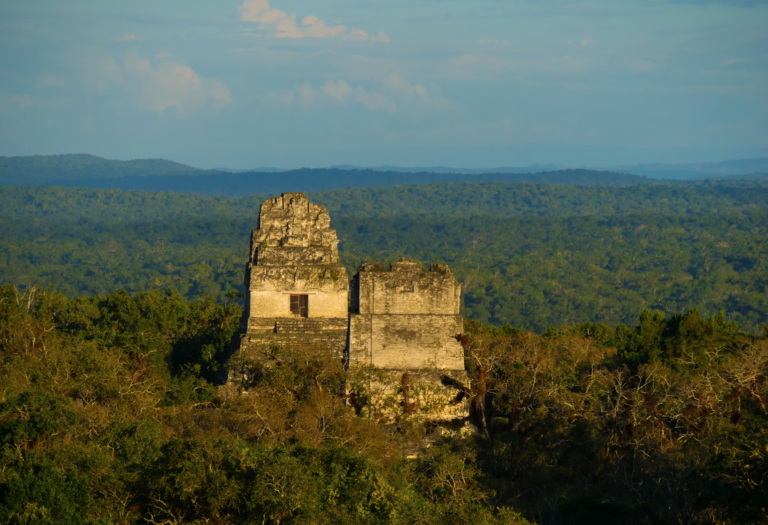
Both Southeast Asia (left) and Central America (right) have incredible temples to explore
BUT WHICH ONE IS CHEAPER?
I found that Southeast Asia was cheaper overall than Central America, particularly when comparing the cheapest destinations. But this could just be because I travelled around Southeast Asia pre-pandemic (2015/16 and 2018) compared to travelling around Central America in 2023. I also stuck to ‘cheaper’ countries in SE Asia.
Remember that the costs of travelling in these regions vary between countries. Central America’s Panama, Costa Rica, and Belize are expensive, even on a par with Europe in some places! But areas of Southeast Asia, such as Singapore, can definitely rival that.
Wherever you travel, you’ll find that cities, beaches, and tourist hotspots are the most expensive places to hang out. So if you’re looking to save some money, venture off the beaten path to less touristy places. You’ll probably get a more authentic experience too!
You could also look into websites like Workaway, or find opportunities to volunteer on your travels, to save money on food and accommodation costs.
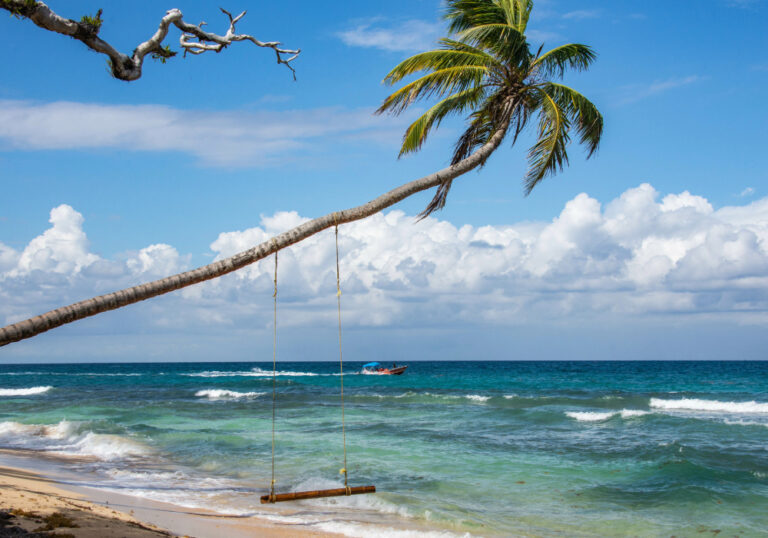
This beach could be in Southeast Asia… or Central America (ok, it’s in Nicaragua!)
CENTRAL AMERICA VS SOUTHEAST ASIA: THINGS TO DO
Both Central America and Southeast Asia are a haven for outdoor adventure. There’s just so much to do in both regions.
Highlights of Southeast Asia include rock climbing, jungle trekking and foot safaris, snorkelling, diving, and hiring a scooter to explore at your own pace. Highlights of Central America include hiking up (and boarding down!) volcanoes, zip lining, wildlife watching, snorkelling, diving and surfing.
HIGHLIGHTS OF SOUTHEAST ASIA
The northern regions of Thailand, Laos and Vietnam are home to small villages, with excellent hiking. And for real altitude trekking, the Himalayas are just a few countries away. Indonesia and the Philippines form part of the ‘Ring of Fire’ and there are so many active volcanoes you can climb up. Renting a motorbike or scooter to explore at your own speed for a few days is also an extremely popular activity in Southeast Asia.
If you fancy taking to the ocean, Thailand is the best and cheapest place to dive in the region, particularly Koh Tao and the Similan Islands. Indonesia, Malaysia, and the Philippines are also known for their budget-friendly diving and snorkelling.
There are also tons of amazing cities to explore, from Singapore to Bangkok. Bustling night markets, historic city walking tours, and riding a motorbike past temples and monuments are just several of the things you’ll find in Southeast Asia’s cities.

Central America has better volcano experiences – This is Acatenango in Guatemala!
HIGHLIGHTS OF CENTRAL AMERICA
Similarly, Central America’s outdoor highlights include jungle trekking, foot safaris and wildlife watching tours. Volcanoes are scattered from Panama to Guatemala, and volcano hiking and volcano boarding are popular activities. Costa Rica in particular has so much infrastructure around outdoor tourism, and other countries are following suit for a cheaper price
Underwater adventures, such as diving or snorkelling, are equally popular: Central America is home to the world’s second largest barrier reef. Utila in Honduras is the cheapest place to learn to dive in the region, and the Corn Islands in Nicaragua, Belize’s Cayes, and Mexico have incredible reef diving. Mexico also has Cenotes (underwater caves) to explore, and Panama’s Isla Coiba on the Pacific side has diving to rival the Galapagos.
Central America is also a huge surf hub. The Pacific coast is full of surf towns, and El Salvador is particularly famous for having amazing waves. El Salvador even hosted the world surfing championships whilst we were there!
And whilst Central America might not have the busy city life quite down yet, there are tons of quaint small towns to explore. My favourites included Nicaragua’s Leon and Granada, El Salvador’s Ataca, and Guatemala’s Antigua and lakeside towns of Atitlan.
CENTRAL AMERICA VS SOUTHEAST ASIA: THE FOODIE SCENE
Food-oriented travellers, this is your section, because there’s another huge difference betweeen Central America VS Southeast Asia: the food!
SOUTHEAST ASIA: FOOD SCENE
Southeast Asia is one of the most amazing destinations for food-oriented travellers. Each country in the region has its own cuisine and style of cooking. Thai food is popular worldwide, and Thailand is an incredible destination for authentic and cheap Thai cuisine. Vietnam also has some amazing dishes, and Cambodia’s curries are truly delicious.
The rich street food culture of Southeast Asia makes it possible to eat like a king on a daily basis without breaking the bank. There’s so many dishes to try: you could stay for a year and not eat the same meal twice!
A large proportion of the population are Buddhist, meaning that vegetarianism is also fairly common in this region and vegetarians and vegans won’t feel limited by the food options available.
CENTRAL AMERICA: FOOD SCENE
Central America, by comparison, isn’t nearly as exciting for food-lovers. If you’re on a budget, you’ll find that most dishes across the region are a combination of meat or fish, rice, beans, plantains and corn tortillas. Delicious, but boring after a few months!
That said, each country does have its own twist on the staple diet. Costa Rica does rice and beans particularly well with its Gallo pinto. El Salvador’s pupusas – thick corn tortillas stuffed with various fillings such as cheese, beans, and vegetables – are truly mouthwatering. Honduras’ baleadas are cheap and plentiful. Belize does creole cuisine, with lobster, seafood, and curries aplenty. And you’ll be able to get tacos across Guatemala and Mexico.
Ahh Mexico! Lots of backpackers include Mexico in their Central American trips, and this country is a hugely underrated culinary destination in our opinion. Realising the depth of Mexican cuisine, and that everything I’d eaten back in Europe was just ‘TexMex’ really blew my mind. My mouth is watering just thinking about it…
There are foodie hotspots though. Nicaragua’s Leon & Granada, and Guatemala’s Antigua were a welcome stops on our itinerary, with a huge variety of local and international food on offer.
WHAT ABOUT VEGETARIAN AND VEGAN TRAVELLERS…?
Southeast Asia has a lot of vegetarian and vegan food, and the region does it well. There are so many options for travellers looking to avoid meat and other animal products.
The only difficulty you might encounter is asking about ingredients, especially in more rural areas where there might be a language barrier. This could be challenging for those with food allergies and intolerances.
Central America, on the other hand, is chicken central! Fried chicken is literally everywhere. The region is discovering USA fast food chains and eating at McDonald’s or Pizza Hut is seen as a bit of flex. That said, the main ingredients for many still centre around rice, beans, plantain, and cornmeal. Those will always be an option to fall back on for vegetarian or vegan travellers, although they don’t provide much variety!
Although both regions have staple meals that cater to veggie and vegan travellers, we’d say Southeast Asia is definitely more varied for those looking to enjoy meat-free meals. That said, I didn’t particularly struggle as a vegetarian in Central America either. There were always options, just maybe not as much variety as I would have liked.
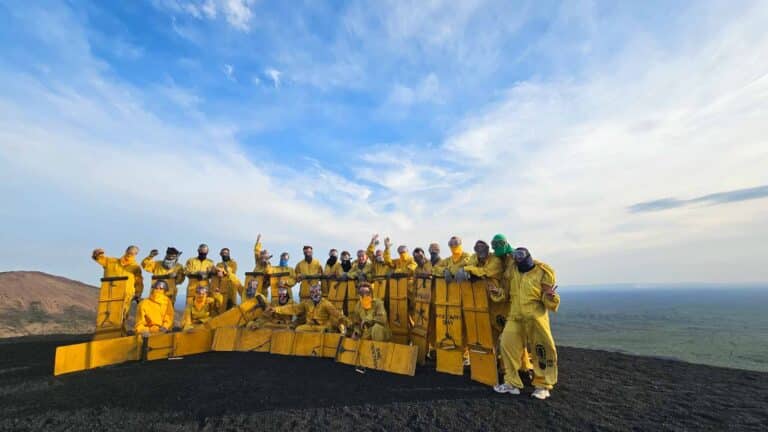
The backpacking crowd: Volcano boarding in Nicaragua
CENTRAL AMERICA VS SOUTHEAST ASIA: THE BACKPACKING CROWD
Ok listen up for this section, because this is where we found a huge difference in the types of travellers we encountered in Central America VS Southeast Asia.
From our experience, Southeast Asia definitely tends to draw a younger ‘first time backpacker’ crowd. Most new backpackers head to this region. Especially backpackers from Europe or Australia where it’s fairly common to take a gap-year straight out of high school, or after finishing university.
And what can I say? Southeast Asia is cheap(ish) for us Europeans to fly to and different enough to be exciting. It’s easy to get around, most people in tourist areas speak English, and it’s super budget friendly.
However, this skew towards younger travellers can lead to a lot of immature backpacker behaviour, with party tourism, lots of drinking-to-excess and all the things that go along with that. Parties and events tend to be tourist-focussed. If you’re looking for a quieter time, it can be harder to find it in this region.
Central America, in comparison, has a historically bad reputation which puts a lot of newbie or first-time travellers off. Although every region has safer and less safe areas, Central America tends to draw an older, more experienced crowd of late-twenty- and thirty-somethings, which we loved.
But if you want to party, you can certainly find it! Party tourism may not be as popular, but popular events like Panama’s Filthy Friday, Belize’s Sunday Funday and Nicaragua’s Treehouse Party keep the good vibes going. Parties and events in Central America tend to also attract locals: it’s so cool to make friends with people who know the region!
Of course, keep in mind that these rules aren’t set in stone, you can find backpackers of all ages and nationalities in both regions! You can find party tourism, beaches to relax, and adventure tourism in both regions too.

Central America VS Southeast Asia: beach parties are plentiful across both regions
CENTRAL AMERICA VS SOUTHEAST ASIA: MUSIC & NIGHTLIFE
Talking about parties, what’s the nightlife like? Between Central America VS Southeast Asia, which region has better party tourism?
CENTRAL AMERICA VS SOUTHEAST ASIA: MUSIC
Again, another area where these two regions totally differ. Central America is a party all day, every day. You’ll find that everyone blasts salsa and reggaeton, especially on the local chicken buses. Even if you don’t think you like this kind of music, you’ll soon get into the groove.
If you love to dance, Salsa classes are offered almost everywhere, and are so much fun to get into the local culture (we highly recommend it!). There’s usually a lesson, followed by live music and an open dance floor.
In contrast, Southeast Asia is known for its slow and quiet cover songs. The music isn’t bad, but it’s nothing special or extraordinary. And outside of backpacker-oriented nights out, you’re less likely to find good music or dancing that you can get involved in.
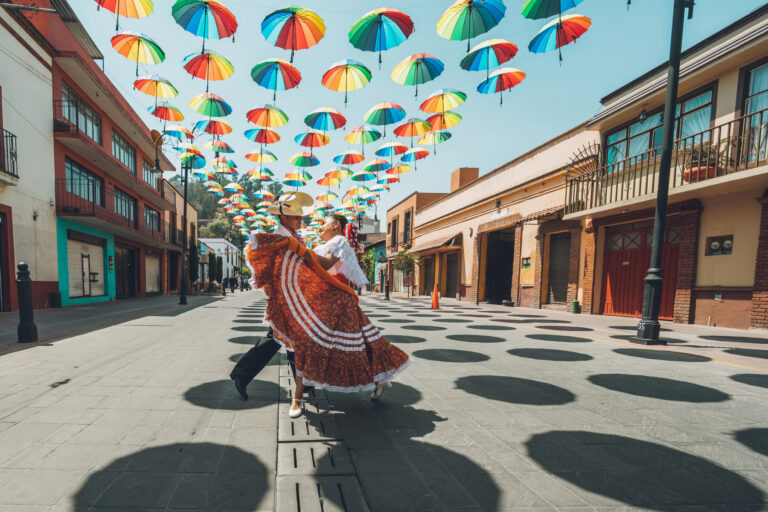
Mexico is one of the best countries to try dancing!
CENTRAL AMERICA VS SOUTHEAST ASIA: NIGHTLIFE
We’ve touched on this already, but Southeast Asia attracts a lot of young, first-time backpackers, and they want to partayyy!
Backpackers in Southeast Asia tend to stick to backpacker bars and clubs or party in their hostels, or at touristy beach hotspots. Happy Hour is all day, every day, sandcastle bucket cocktails are ubiquitous, drunken behaviour is almost expected, and due to this trend towards a younger average age, you see much more irresponsible drinking from backpackers in Southeast Asia.
In SE Asia, it’s unusual for tourists and locals to mingle. Some backpackers do cross over and party alongside locals but this is rare. If you want to make friends with fellow English-speakers, and find fun people to do things with, SE Asia is perfect.
Central America is the opposite! As this region tends to draw an older crowd, you’ll find fewer drunken teens who can’t handle their booze. Everyone’s really fun to be around whilst still being really respectful of the places that they’re visiting.
Backpacker bars do have their place, particularly in touristy areas such as San Juan del Sur, Nicaragua, or San Pedro, Guatemala. But we also found that backpackers in Central America tend to join the local nightlife as there are fewer party hostels. Central American ‘tourist parties’, such as Nicaragua’s Sunday Funday, also attract a lot of locals.
This gives the nightlife in this region such a good vibe. You’ll really get to experience the real Central America alongside the locals, and not just the shiny parts that they save for the tourists. It’s common to end up with new local friends by the end of the night. And they have the best recommendations for things to do
CENTRAL AMERICA VS SOUTHEAST ASIA: SCENERY
The scenery in Central America VS Southeast Asia is similar, yet different. Yes, there are jungles, rainforests, coral reefs and volcanoes. But both regions are so different in terms of wildlife and atmosphere.
CENTRAL AMERICA: SCENERY
Central America has a lush strip of rainforest on the Caribbean coast, and more arid, volcanic landscape on the Pacific. Volcanoes stretch from Panama to Mexico, providing the ideal backdrop for scenic hikes – you can even board down one active volcano in Nicaragua. Panama and Costa Rica are also home to the ‘cloud forest’, a rare biome with tons of cool birds and wildlife.
Jungle trekking and wildlife tourism is popular in this region. It’s mostly an eco-friendly activity, especially in Costa Rica which has strict standards for eco-tourism. Common animals in Central America include sloths, crocodiles, armadillos and snakes and you’re likely to see them all!
There are so many idyllic beaches and islands to explore: some of the most beautiful include Panama’s San Blas Islands and Nicaragua’s Little Corn Islands. The warmer Caribbean ocean, with its reefs to explore, contrasts with the cool, surf-friendly Pacific. El Salvador’s El Tunco and El Cuco are particularly famous surf hotspots.
The ancient Mayan history of the area is woven throughout the region through its culture and traditions. Mayan temples poke through the jungle canopy in the distance; famous sites include Honduras’ Copan Ruinas, Guatemala’s Tikal, and Mexico’s Chichen Itza.
One thing that Central America lacks is the vibrant city life. Most cities in Central America are large, sprawling, and dangerous with little to interest tourists. The scenery in smaller towns is very ‘colonial Spanish’ in style, and the quaint buildings and town squares more than make up for the lack of cool cities here!
Here’s what you can expect from Central America:
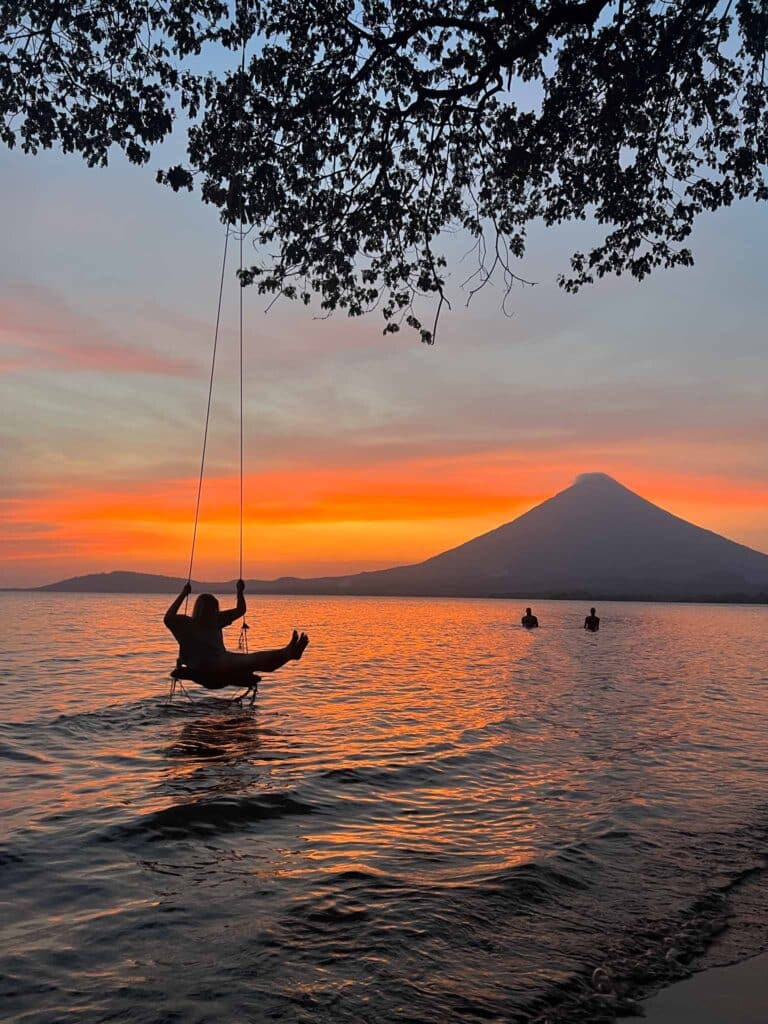

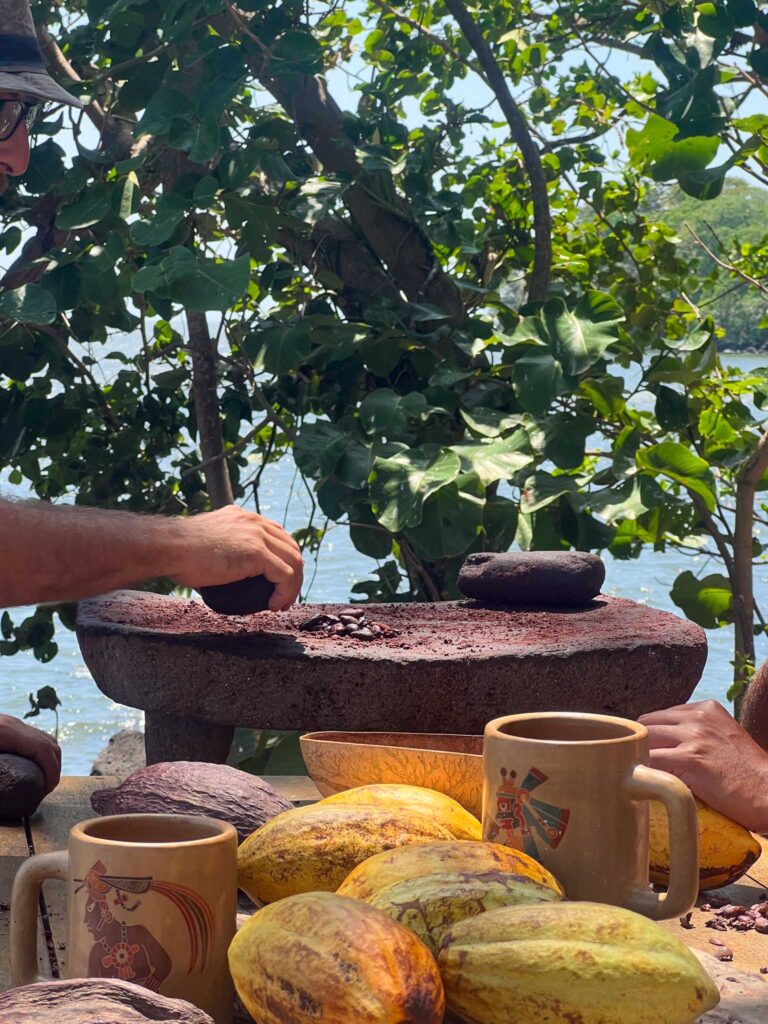
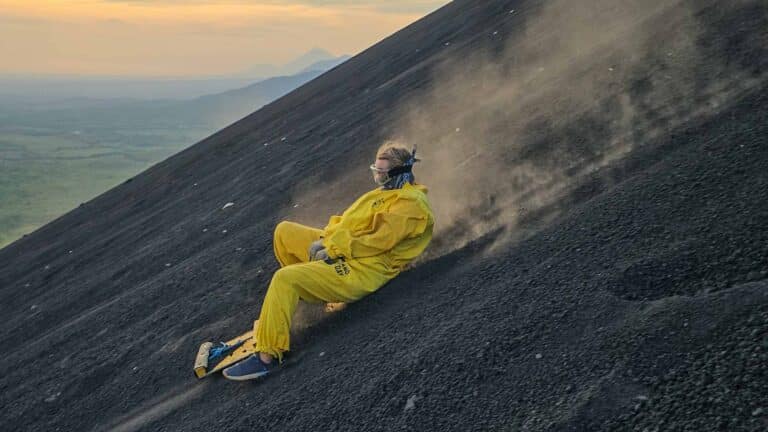
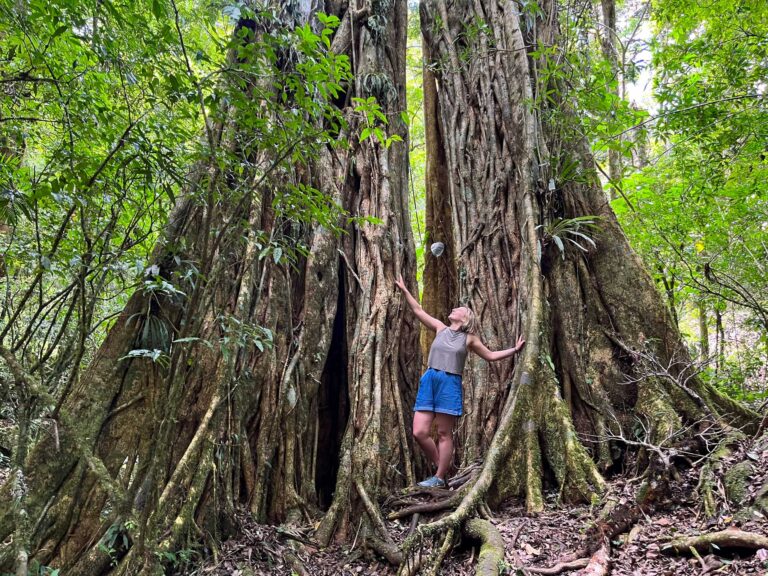
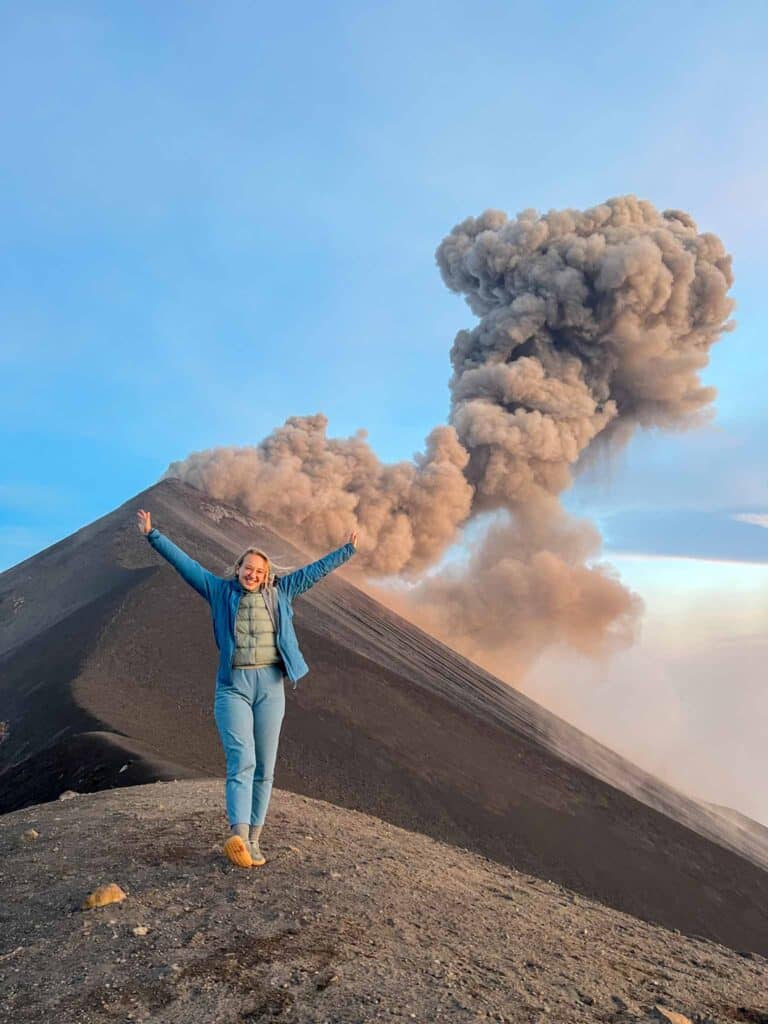

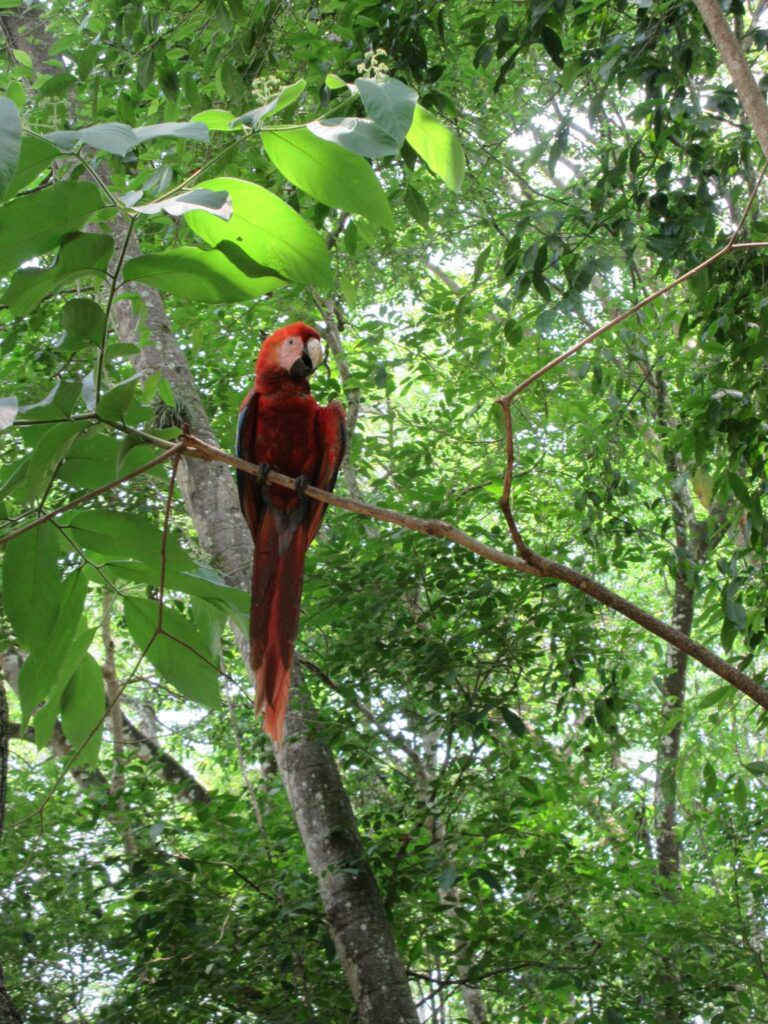




SOUTHEAST ASIA: SCENERY
Similarly, the scenery in SE Asia ranges from lush rainforests and tropical beaches to vibrant cities and ancient temples. Countries like Malaysia and parts of Thailand are covered in dense jungles, where you might spot monkeys and elephants. Vietnam, Indonesia and the Philippines have a large number of rice terraces carved into the mountainsides, making for a unique hiking destination.
Temples also reach through the jungle canopy here. Angkor Wat in Cambodia, Borobudur in Indonesia, and Bagan in Myanmar are just a few of the iconic landmarks that showcase the region’s rich history and architectural wonders.
The region is dotted with pristine beaches and islands with crystal clear water and powder-white sand for that postcard-perfect scenery.The stunning coastlines and vibrant marine life, makes Southeast Asia a popular destination for beach lovers and divers alike.
Southeast Asia is also home to bustling metropolises like Bangkok, Singapore, and Kuala Lumpur, where modern skyscrapers blend with traditional architecture, vibrant street markets, and bustling nightlife. These cities offer a contrast to the region’s natural beauty, with their dynamic energy and cultural diversity.

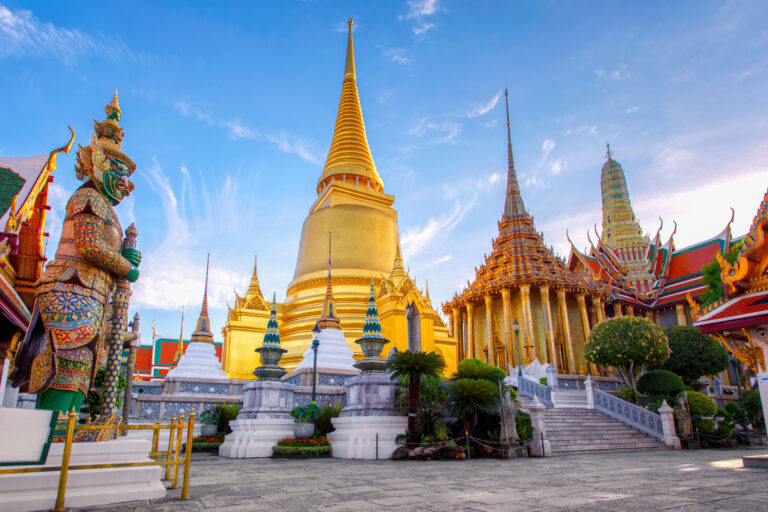


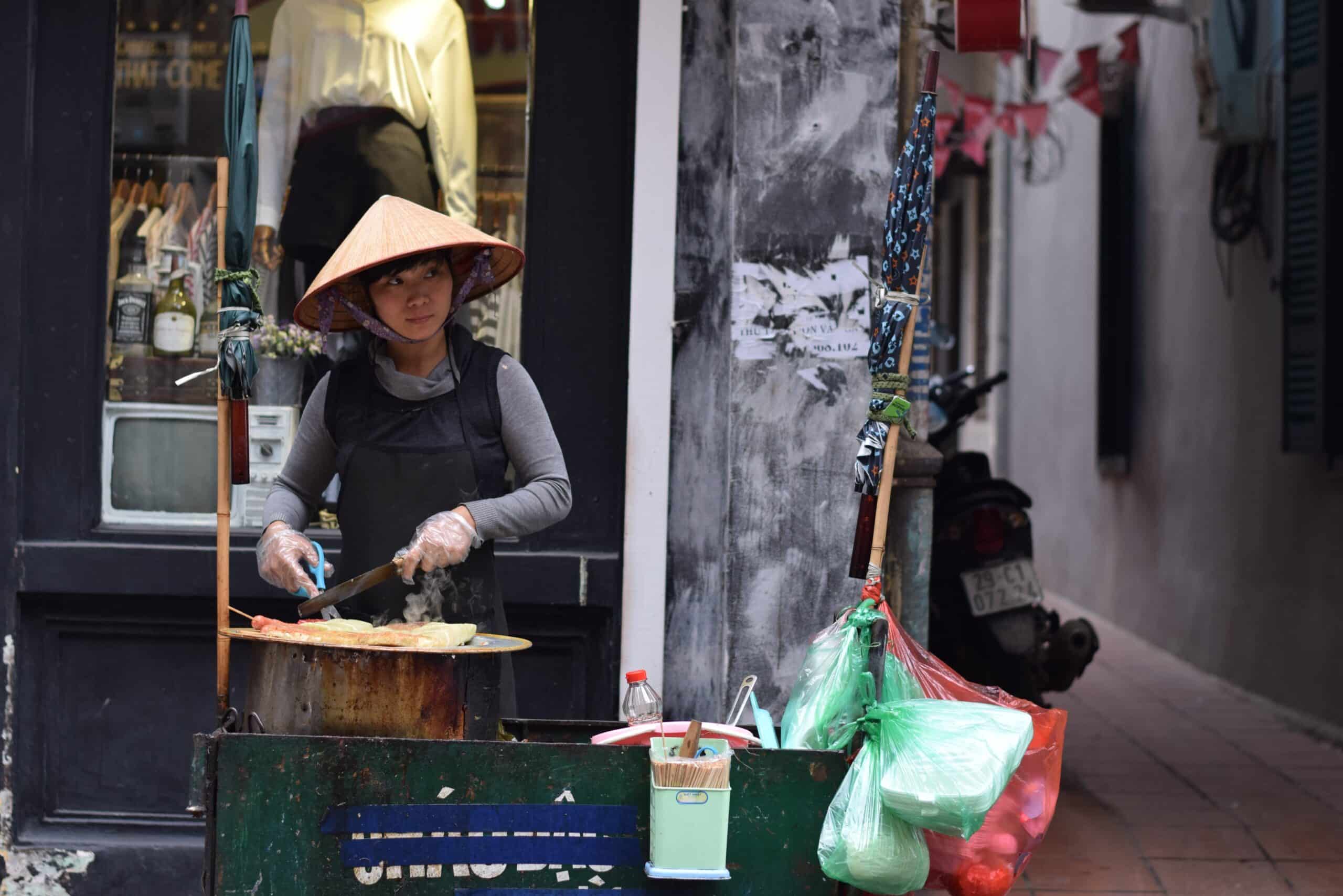
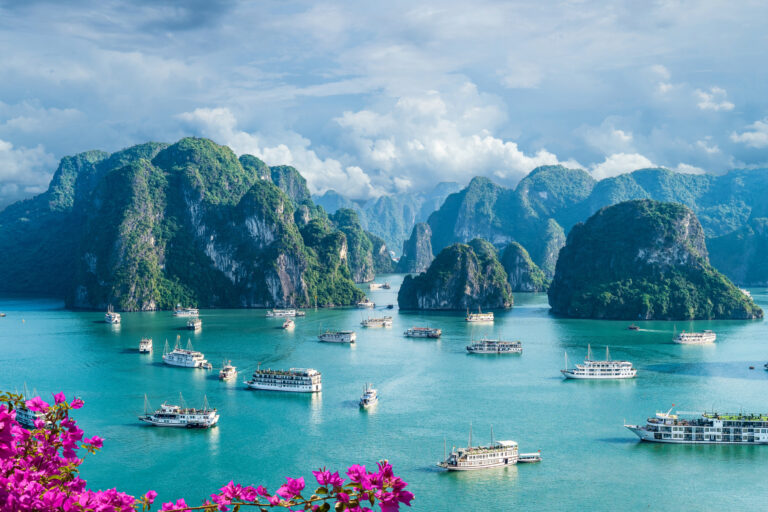
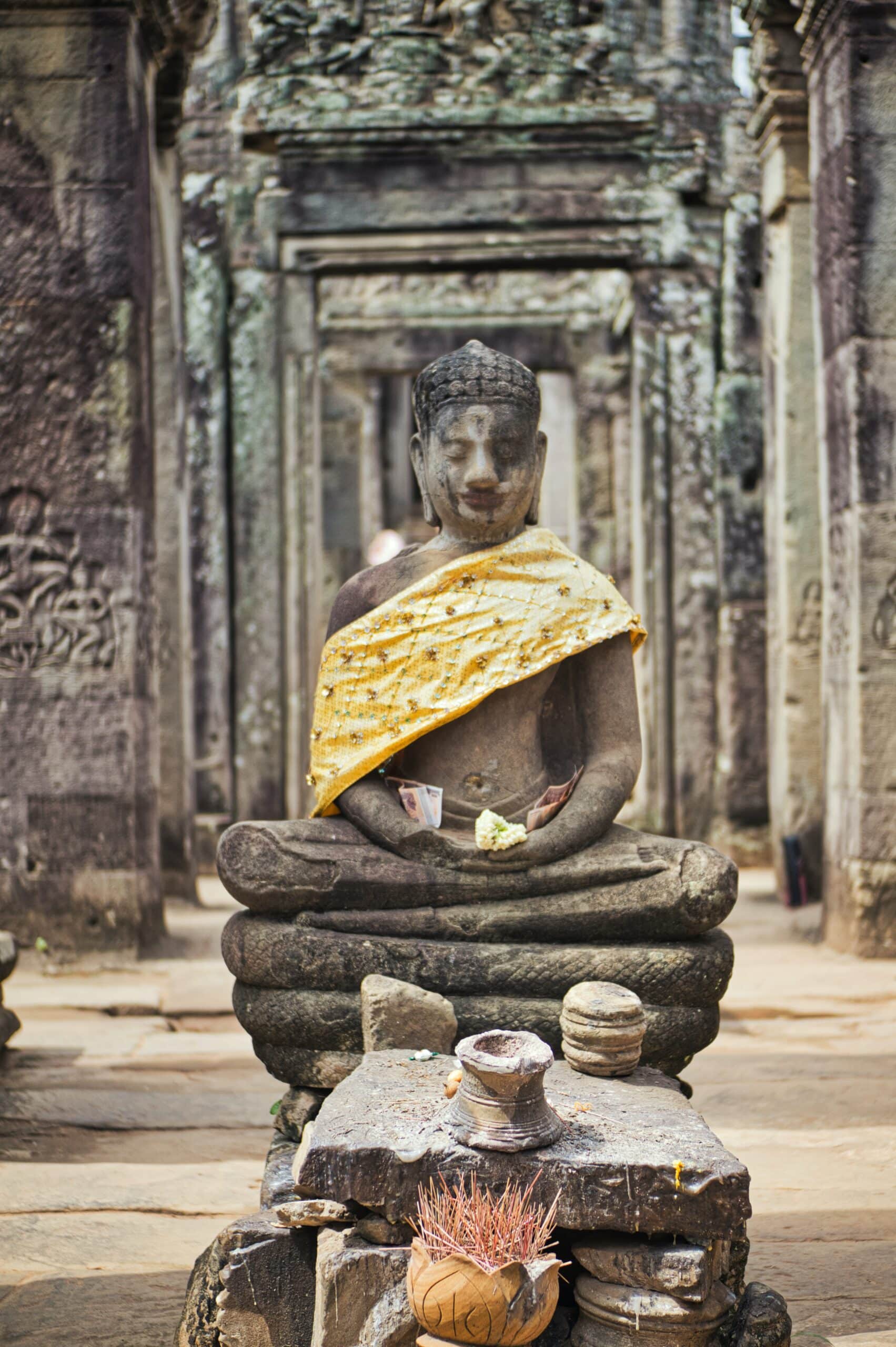


CENTRAL AMERICA VS SOUTHEAST ASIA: LANGUAGE BARRIER
So, you don’t speak Spanish or Thai? How hard of a time will you have getting around Central America VS Southeast Asia?
SOUTHEAST ASIA: LANGUAGE
I found it easy to get around Southeast Asia without speaking any of the local languages. In Southeast Asia, nobody expects foreigners to learn Vietnamese or Thai. Most locals in tourism speak enough English to provide you their services, so you’ll get by ok! That said, having to adjust to a different language in each country can be hard, especially in rural areas.
CENTRAL AMERICA: LANGUAGE
Excluding Belize, Central America is united by a common language: Spanish! Some countries (Panama, Costa Rica, touristy parts of Mexico) are easy to get around without much Spanish. Others (El Salvador, Honduras) almost impossible. Countries such as Guatemala and Mexico are affordable and popular for Spanish ‘crash courses’.
A NOTE:
No matter where you go, it is always polite to learn some of the local language. This can be as simple as four phrases: ‘hello’, ‘goodbye’, ‘please’ and ‘thank you’. Learning the very basics shows that you’re making an effort. Locals will, more often than not, instantly warm to you. You might get smiles, better prices, or people might be more amicable and helpful towards you.
At the very least, learning these four basic phrases helps to stop you from falling into the stereotype of ‘ignorant Brit’ or ‘ignorant American’. Because let’s face it, most of us with English as our native tongue are downright lazy when it comes to language learning.
So, pick up Duolingo or your preferred language app, and invest a little time in learning some basics. Even if it’s just doing a few lessons on the flight over. It’s a free resource, you’ve got no excuse not to!
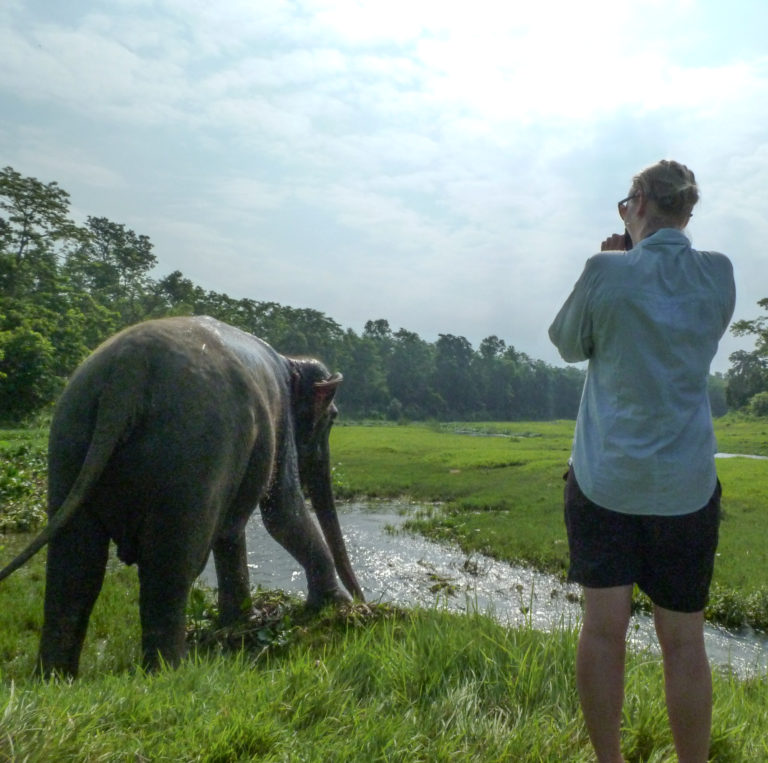
Visiting elephants in Southeast Asia
CENTRAL AMERICA VS SOUTHEAST ASIA: EASE OF TRAVEL
GETTING AROUND SOUTHEAST ASIA
Southeast Asia, especially the Big Four (Thailand, Cambodia, Vietnam, Laos) is one of the easiest places I’ve ever travelled around.
Most areas in the region cater to tourism at all levels, from simple guest houses for budget backpackers to glam all-inclusive hotel stays. You can book trips and transportation straight from almost every hostel or guesthouse, and there are public transport options between most of the popular areas.
There are also lots of budget airlines that can fly you around Southeast Asia. Although these are cheap, we don’t recommend flying such short distances. Not only does it cost the environment, but it takes away from the joy and discovery of the journey and limits your connection with the country you’re in.
Interested in sustainable and ethical travel? Here are a few articles to get you started
GETTING AROUND CENTRAL AMERICA
Central America isn’t quite that easy to get around, especially if you veer away from the tourist trail, but it’s still not that bad. Most countries in Central America have a great hostel scene, although you may be more likely to find guesthouses in countries where tourism is still developing, such as El Salvador and Honduras. Most guesthouses and hostels can book your transportation and activities, or at least advise you on how to do it yourself.
Chicken buses – old painted US school buses which act as local transport – criss cross the region. Once you figure them out, they’re a fun and cheap way to get around, although you might have to change three or four (or more) times before you get to your destination!
There are also several backpacker minibus routes that run between popular destinations. With comfortable seats and air conditioning, these are soooo worth it for longer trips between towns. I especially recommend taking the tourist minibuses when crossing borders, as some border crossings can be a little sketchy.
Flights within Central America tend to be quite expensive. Plus, they don’t really take you where you want to go. Flights in Central America usually connect capital cities, and most capital cities in the region have a dodgy reputation and little to interest tourists. Bus travel is much more of a norm here.

Rice terraces in Vietnam
CENTRAL AMERICA VS SOUTHEAST ASIA: SAFETY
So, which region is safer? Central America VS Southeast Asia.
Firstly, remember that nowhere is 100% safe. Even ‘safe’ cities that I’ve lived in in the UK, such as London and Edinburgh, still have occasions of petty and violent crime. You can visit somewhere ‘dangerous’ (hello Honduras) and have an amazing and safe time. Or you can head to a place with a ‘good reputation’, and still get your stuff stolen.
SOUTHEAST ASIA: SAFETY
Southeast Asia has a reputation for being very safe. Violent crime is rare. However, petty crime and scams are common, especially in Cambodia and Vietnam. Keep an eye on your backpack, lock up your stuff in hostels, and read up on local scams to stay aware.
One of the most dangerous things you can do in SE Asia is to cross the road, rent a motorbike or ride public transport! Road conditions and driving standards can be very different to what you might be familiar with back home. So make sure any travel insurance covers this.
SOUTHEAST ASIA: WOMEN’S SAFETY
As a woman, I felt very comfortable in Southeast Asia, although this might have just been because I was travelling with a group of (mostly) guy friends. Street harassment and catcalling was minimal. It’s also very safe at night, most towns and cities never really sleep and street vendors are out all night, meaning that you’re never left walking alone down a dark alley.
CENTRAL AMERICA: SAFETY
Central America has a bit more of a sketchy reputation, with cities such as San Pedro Sula, Honduras, being up there with the top 10 cities with the highest murder rates (you can read more about that here…). There’s not much going on in the big, dangerous, and dirty cities anyway. You’re best just skipping them, unless that’s the city you’re flying home from.
Although you’re unlikely to end up a homicide victim, you should always keep an eye on your things, especially in crowded areas and on public transportation. Never flash your valuables around and avoid displaying signs of wealth, such as smart watches or well-known luxury brands. Then again, this rule goes for most countries, it’s not specific to Central America!
Don’t let Central America’s reputation put you off. Yes, bad stuff happens, but it happens everywhere. People in Central America were so warm hearted and genuine, far more so than in SE Asia.
CENTRAL AMERICA: WOMEN’S SAFETY
Central America also felt safe both during the day, and at night. I personally didn’t experience any street harassment. That said, we mostly stuck to small towns and rural areas where verbal harassment towards women might be less common.
TRAVEL ADVICE:
Whether you travel to Central America, Southeast Asia, or somewhere else, always do your own research. UK-based readers may wish to start with the UK Government page for travel for up-to-date advice and news. USA-based readers can find the same from the Department of State here. Travel advisory websites can be a bit overzealous, if you listen to them completely you’d never leave your home! But they’re a good way to start your travel planning.
As in any country, if you do your research, exercise common sense, and don’t do anything you wouldn’t do at home, the chances of something bad happening are slim!
Oh, and always buy travel insurance! You never know when you’re going to need it.

I miss the food scene in Mexico!
SO CENTRAL AMERICA VS SOUTHEAST ASIA: WHICH IS BEST?
Well, that’s for you to decide!
I’m not going to say one region is better than the other. I can’t make that decision for you. Your travel style and interests might be completely different to mine. But I hope that this list has been useful to help you weigh up which is better, Central America VS Southeast Asia.
If you’re younger, or a first-time backpacker it might be easier to start with Southeast Asia. You’ll likely be around people your own age in the same scenario and it’s easy to make friends. Southeast Asia is also marginally cheaper, so if you’re on a very low budget, this might be the better choice for you. If you’re from Australia or New Zealand, it’ll be a lot cheaper and quicker to get there too.
Central America is ideal for travellers based in North America, as there are so many cheap(ish) flights. It’s also great for more seasoned travellers, those who fancy a bit of a challenge, and those who want to be able to opt in and out of party tourism as they like. I thought that Central America was the perfect region to travel in my mid-20’s. There were more people there that were my age when I visited, and younger travellers have mentioned that they found it difficult to connect with people compared to other places in the world.
But that’s just the order I did it in! Visit the region that’s calling to you, and have an incredible time. Southeast Asia and Central America are both amazing regions, with so much to do, see, and experience. Whichever you choose, the other region will still be there in the future. So go, explore, and have a blast!
And come back to share all about it in the comments.
LIKE IT? PIN IT!
SAVE THIS POST TO YOUR PINTEREST BOARD TO COME BACK LATER
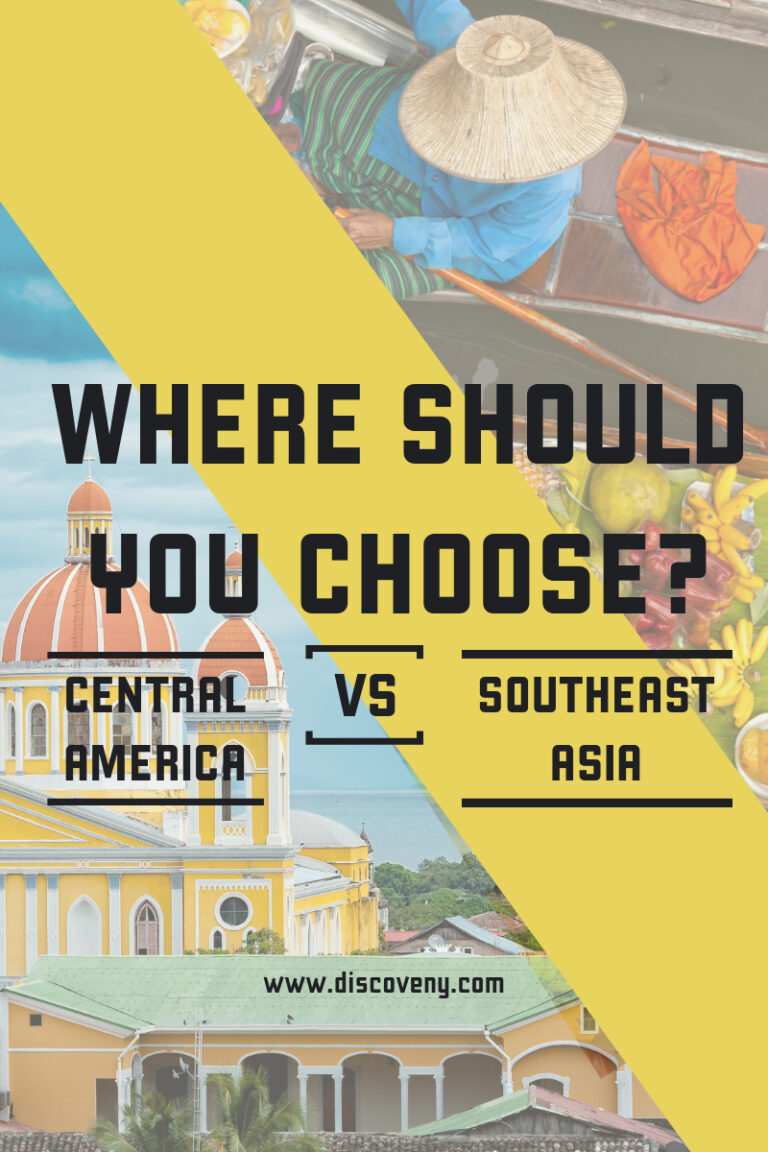
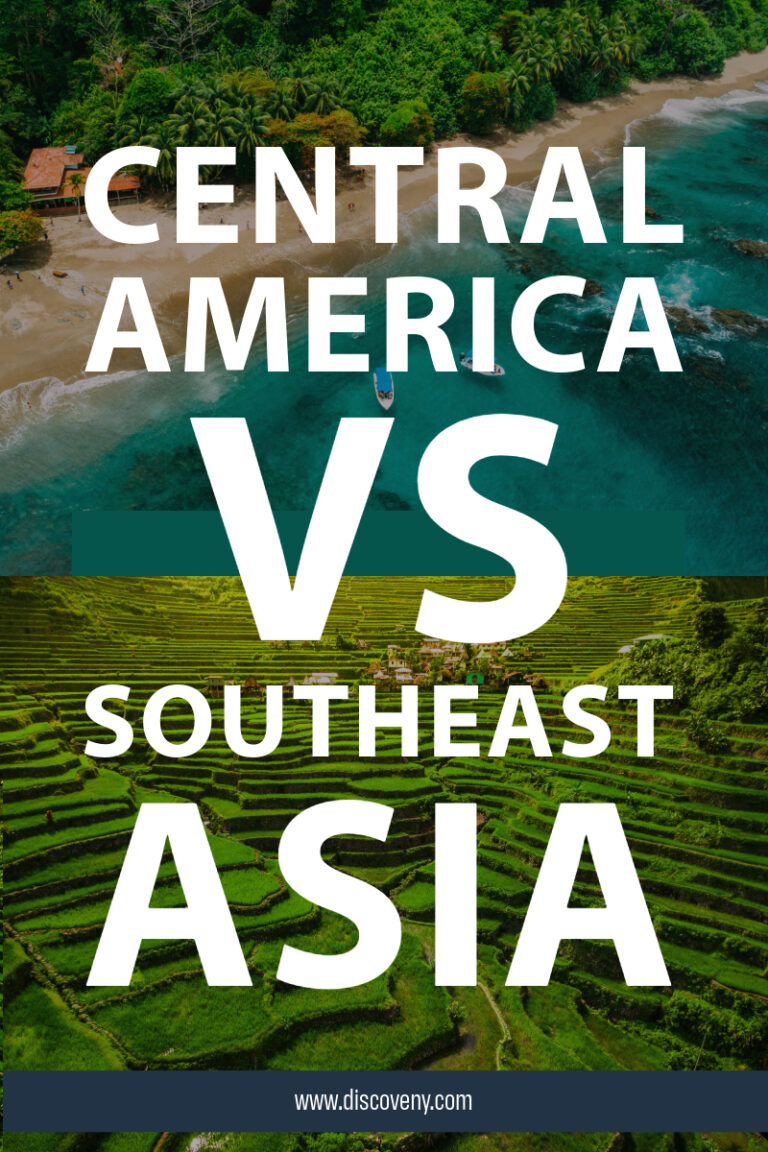
Follow our daily adventures on Facebook and Instagram
Disclaimer: The information and advice provided in this blog are the author’s opinions and based on their personal experiences. All information was accurate at the time of writing. However, things can change quickly, so always double-check current conditions and guidelines before setting out. Remember, your travels and safety are your own responsibility, and this blog can not be held responsible for anything that might happen on your adventures! Always exercise caution and good judgment. Oh, and don’t forget to get travel insurance! Happy travels!
This post may contain affiliate links (yay for transparency!) This means that I will earn a small commission, at no additional cost to you, if you click the link and choose to buy the product. I only link to stuff I have personally bought and found useful and never endorse crap. Your support helps keep the site going, thank you!
Alice
Alice is a UK travel blogger who advocates sustainable travel and being more eco-conscious on a budget. She loves coffee, her houseplants and summiting mountains.
You May Also Like
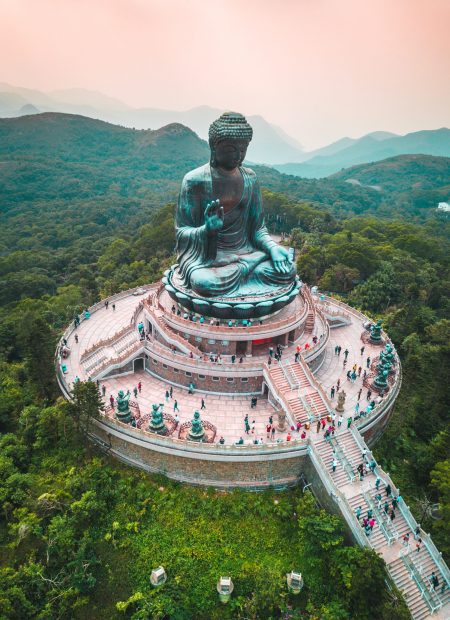
Why you should NOT visit the Big Buddha in Hong Kong
July 18, 2020
Mum’s Not Home | Hidden Gem Hong Kong
February 22, 2023